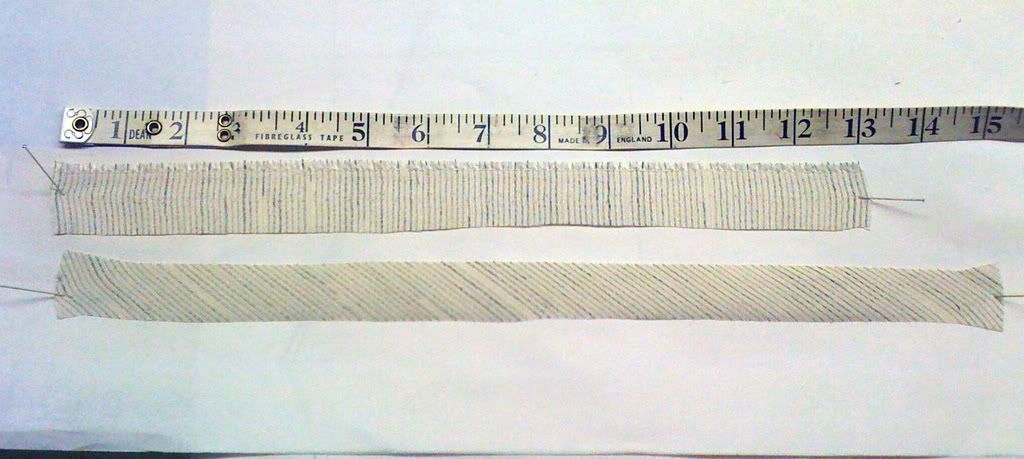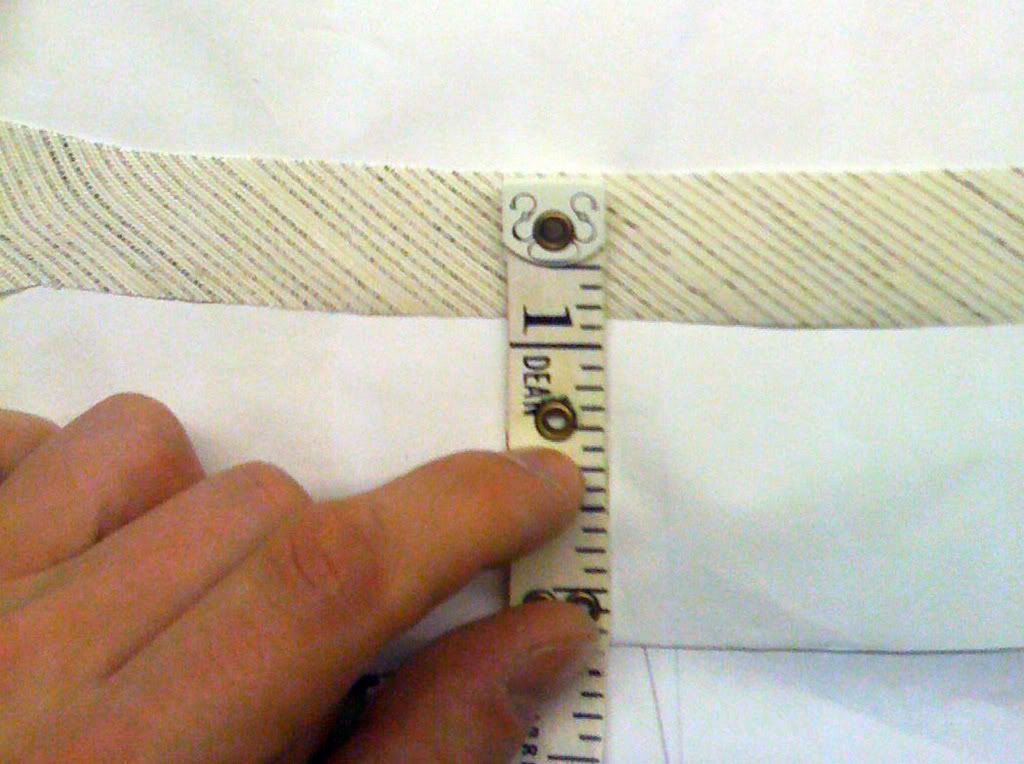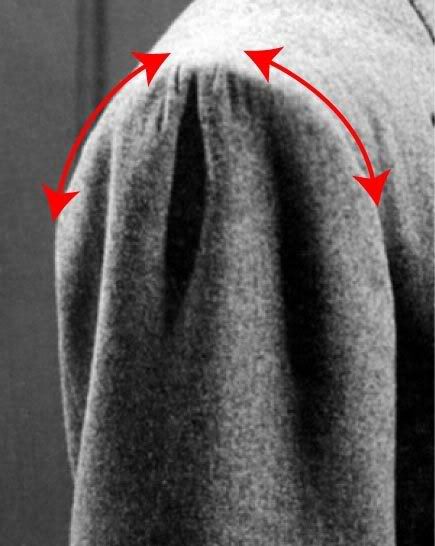(I'm trying out a new photo hosting format and I'm not sure what results I'm going to get so bear with me here)
When discussing fulling (or, the modern term, easing) and stretching as well as elasticity it is important to have an understanding of what is happening to the cloth, and to understand this one needs to understand a bit about the weave.
Cloth is made up of interlacing yarns running, in a plain weave, perpendicular to each other. Fancy weaves can be created by varying the way they are interlaced, but that is not within the scope of this discussion. The yarns running along the length of the goods are known as the warp (or the lengthwise grain), and are generally stronger than the filler yarns that are run along the weft (or, crosswise grain). This is important when cutting pieces which are subject to strain like waistbands and pockets- they will generally be cut along the warp.
If you try to stretch the goods along either grain, the amount of stretch is limited by the amount of elasticity in the yarns themselves, which is usually rather limited; imagine stretching a shoelace- not much stretch? How is it, then, that we can shape a garment by stretching parts of it? That is where the bias comes in.
The bias is an angle measured from the straight or crosswise grain; the true bias is a 45 degree angle. Just as the properties of the warp and weft are considered when cutting, the bias must also be considered. Madeleine Vionnet was widely (and dubiously) credited with the “invention” of the bias cut, but she is clearly the most notable champion of it; her fluid gowns of the twenties and thirties showed how the bias could be used to mold cloth and that the weave would shift, clinging to the body and draping gracefully.
The principle behind this is that tension exerted along the straight grain stresses the yarn and very little displacement occurs; tension exerted along the bias will not strain any given yarn, rather it will cause the weave itself to shift- the yarns are displacing themselves. In the images below you see two strips of canvas cut the same length but one is on the straight and one on the bias; the they are also shown stretched out- the straight has gained very little but the bias-cut strip has stretched a great deal. 

Notice also that the bias-cut piece changes its dimensions- as it gets longer, it gets narrower.

The inverse is also true- when we try to ease or full parts of the garment, an area cut on the straight grain is likely to wrinkle or pucker since the yarn is being compacted (think of folding a paper into an accordion) but the weave of areas cut on the bias will compact and thus the easing will be smooth. The degree of bias will govern how much easing can be done- straighter cuts will allow less easing and cuts at 45 degrees will allow the most.
The clever cutter will keep this in mind when considering where he might need extra length, like the front of the shoulder and thus maximize the degree of bias, or areas which need to be eased in, like around the sleeve cap, and plan the distribution accordingly. The sleeve in particular, with its varying degrees of bias, is a tricky thing- the middle of the front is close to the straight grain so very little ease should be placed there, whereas the area around the front of the shoulder bone is very rounded so a lot of fullness can be placed there, but one must be careful- the area roughly ¾” to either side of the very top of the sleeve is on the straight grain so no fullness must be placed here or the sleeve will pucker. Below you see a sleeve which, by accident or by design, shows this puckering at the very top because fullness has been placed there. These days we would be careful to distribute the fullness to either side of the top where it will be eased in smoothly (as highlighted by the arrows), and place nothing at the very top. The sleeve can be just as full but a more careful distribution will give cleaner results. Of course, certain Neapolitans have different ideas about that, but I have been told stories straight from the horse’s mouth about how that kind of thing came to be accepted in Naples at the time….. Not having been there myself I won’t comment. 








1 comments:
Dear Jeffrey! (May I call you Jeffrey?) Thanks so much for this great explanation of bias; particularly as it relates to easing or fulling the sleeve cap. I'm a home sewer, and for years there's been this debate as to whether or not the ease of the sleeve cap should stop a half-inch or so on either side of the top of the cap. I've read in Threads sewing magazine that Armani doesn't ease the cap at these points, and I think I've seen a Roberta Carr (sewing teacher)
video; where she said not to ease the cap there, as well.
I never understood why this was so.
Now I do.
Thanks again. :-)
Post a Comment